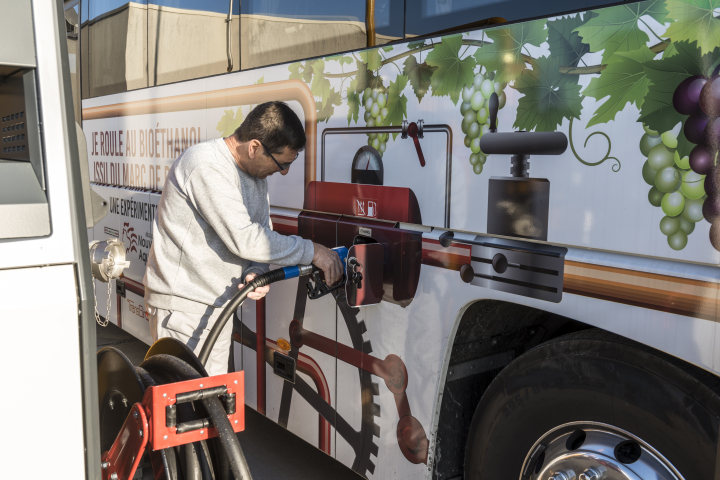The Union Coopératives Vinicoles d’Aquitaine in Bordeaux, which produces 100,000 tonnes of grape marc every year, sends its pomace to Raisinor France Alcools to turn into biofuel. This bioethanol now powers a Citram Aquitaine bus running between Bordeaux and Blaye (below). This made us wonder about other alternative uses for marc and lees extracts, so we asked James Wright, an international viticulture and management consultant, to enlighten us about the latest research in this field…

Are you putting your marc straight back into the vineyard? Or composting it first?
If so, are you having problems with high levels of potassium, leading to the settling out of tartrates during bottle aging? Returning marc to the vineyard can also exacerbate salinity issues, particularly in drier, warmer climates where the leaching of salts through rainfall is less and vines are typically under more stress.
This effect has been a concern in warmer regions around the world for some time, however climate change means that those who previously had no problem should take another look at their practices.
Perhaps you have also been working with a feed company to include raw marc into livestock feed (as feed containing grape marc tannins can reduce methane production by up to 20%).
What about your lees waste? Is it also going into the ground or being diluted with water and washed down the drain?
Take another look at your waste, it contains high-value ingredients.
There has been a flood of research recently into antioxidants and their potential health and beauty benefits have provided the main impetus for increased wine industry research into the extraction of compounds.
'The need to find alternative disease management strategies to synthetic fungicides is also motivating a small number of researchers to investigate the use of extracts on common grapevine diseases'The need to find alternative disease management strategies to synthetic fungicides is also motivating a small number of researchers to investigate the use of extracts on common grapevine diseases. Progressive wineries are also motivated by the environmental benefits, social benefits and, of course, the potential to generate revenue from the large volume of problematic waste materials.
Here are six examples of the research work into winery waste extraction from the past few years:
- Extraction of squalene from lees for medicinal and cosmetic purposes;
- Extraction of mannoproteins from lees for use as a winery addition to modify wine chemistry and sensory characteristics;
- Use of lees as a bio refinery feedstock for the production of bioplastics;
- Extraction of polyphenols from marc and grapeseed oil for medicinal, nutraceutical, cosmetic and biofuel additive purposes, primarily based on their antioxidant capacities;
- Extraction of polyphenols (ie stilbenes) to combat grapevine fungal diseases via their plant activator functionality;
- Extraction of pigments for cosmetic and industrial purposes.
James Wright is an international viticulture and management consultant and author of www.vitisynth.com and the newsletter VitiSynthesis.













.png)






